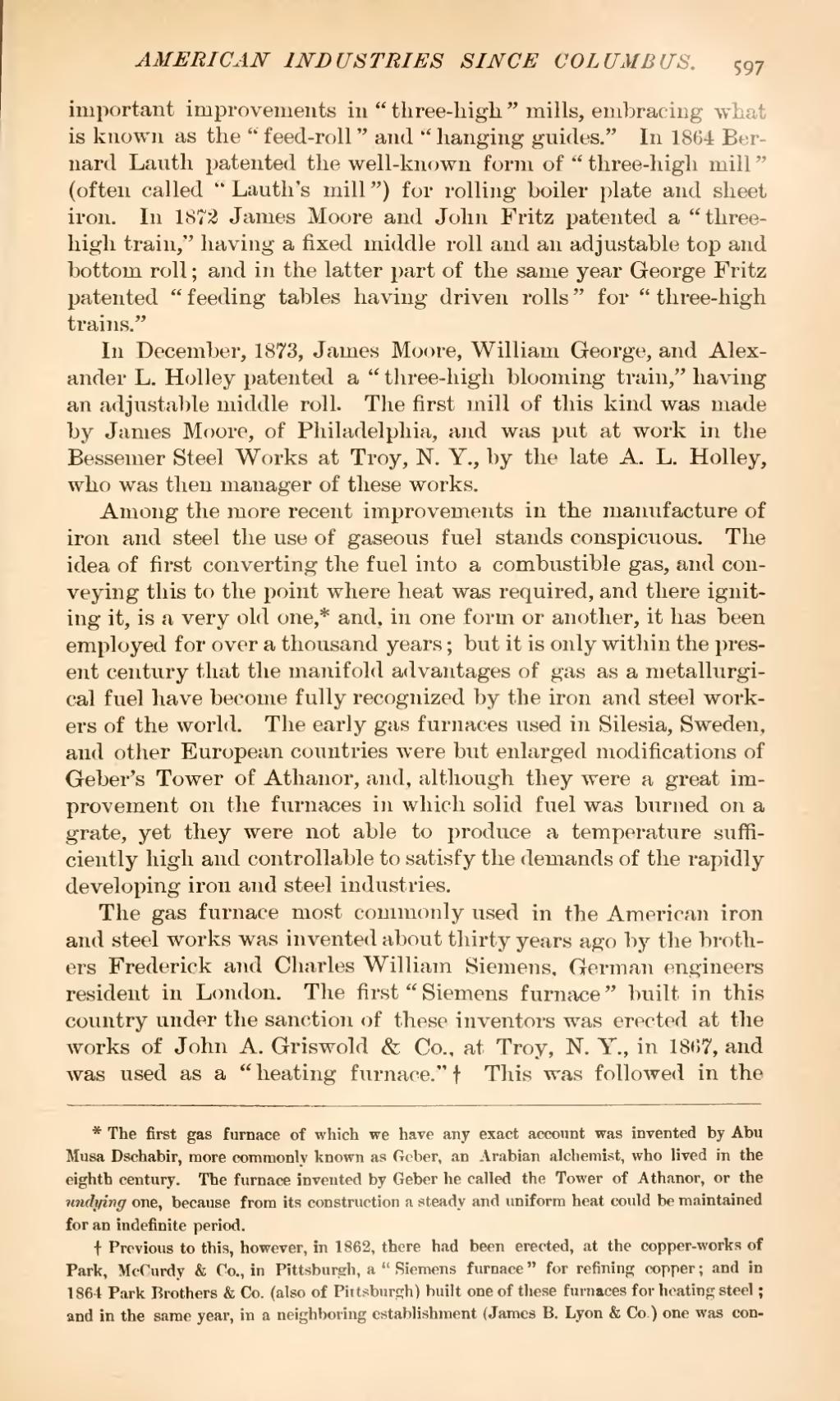important improvements in "three-high" mills, embracing what is known as the "feed-roll" and "hanging guides." In 1864 Bernard Lauth patented the well-known form of "three-high mill" (often called "Lauth's mill") for rolling boiler plate and sheet iron. In 1872 James Moore and John Fritz patented a "three-high train," having a fixed middle roll and an adjustable top and bottom roll; and in the latter part of the same year George Fritz patented "feeding tables having driven rolls" for "three-high trains."
In December, 1873, James Moore, William George, and Alexander L. Holley patented a "three-high blooming train," having an adjustable middle roll. The first mill of this kind was made by James Moore, of Philadelphia, and was put at work in the Bessemer Steel Works at Troy, N. Y., by the late A. L. Holley, who was then manager of these works.
Among the more recent improvements in the manufacture of iron and steel the use of gaseous fuel stands conspicuous. The idea of first converting the fuel into a combustible gas, and conveying this to the point where heat was required, and there igniting it, is a very old one,[1] and, in one form or another, it has been employed for over a thousand years; but it is only within the present century that the manifold advantages of gas as a metallurgical fuel have become fully recognized by the iron and steel workers of the world. The early gas furnaces used in Silesia, Sweden, and other European countries were but enlarged modifications of Geber's Tower of Athanor, and, although they were a great improvement on the furnaces in which solid fuel was burned on a grate, yet they were not able to produce a temperature sufficiently high and controllable to satisfy the demands of the rapidly developing iron and steel industries.
The gas furnace most commonly used in the American iron and steel works was invented about thirty years ago by the brothers Frederick and Charles William Siemens, German engineers resident in London. The first "Siemens furnace" built in this country under the sanction of these inventors was erected at the works of John A. Griswold & Co., at Troy, N. Y., in 1867, and was used as a "heating furnace."[2] This was followed in the
- ↑ The first gas furnace of which we have any exact account was invented by Abu Musa Dschabir, more commonly known as Geber, an Arabian alchemist, who lived in the eighth century. The furnace invented by Geber he called the Tower of Athanor, or the undying one, because from its construction a steady and uniform heat could be maintained for an indefinite period.
- ↑ Previous to this, however, in 1862, there had been erected, at the copper-works of Park, McCurdy & Co., in Pittsburgh, a "Siemens furnace" for refining copper; and in 1864 Park Brothers & Co. (also of Pittsburgh) built one of these furnaces for heating steel; and in the same year, in a neighboring establishment (James B. Lyon & Co.) one was con-

